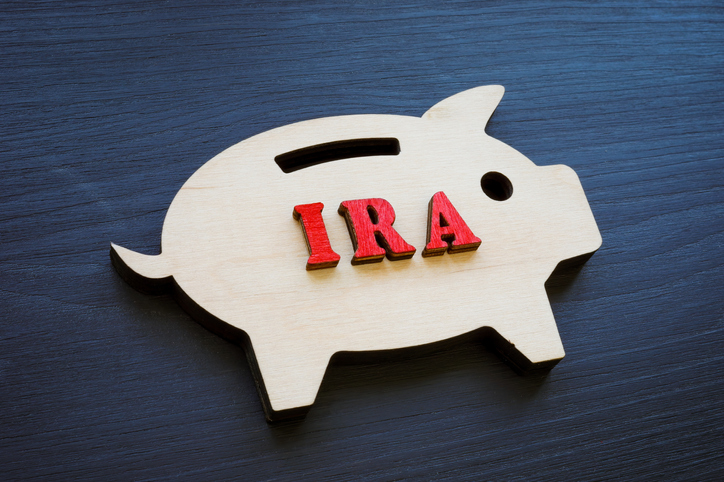You can move money from an IRA into a savings account, but doing so generally triggers a taxable distribution unless the IRA is a Roth and the withdrawal meets qualified-distribution rules. Transfers out of a traditional IRA are treated as ordinary income and may also be subject to a 10% penalty if you’re under age 59 ½. Some people still consider this option when they want immediate access to cash or prefer a low-risk account, but it typically reduces the tax-advantaged growth that an IRA provides.
A financial advisor can help you build a financial plan for a comfortable retirement.
How an IRA Works
An individual retirement account (IRA) is a tax-advantaged account that allows you to make tax-free contributions that you can withdraw penalty-free during retirement.
It is an account you maintain independently, unlike a 401(k) plan that is controlled by an employer. You have the option to transfer your IRA balance to a savings account, but first, there are some penalties and taxes to consider.
What taxes and penalties you pay ultimately depend on the type of IRA you choose. Two common types are traditional IRAs and Roth IRAs, but they are taxed very differently.
IRA Early Withdrawal Penalties
Most traditional IRAs have penalties if you withdraw early before the age of 59 ½. If you withdraw from your traditional IRA before that age, the IRS will charge income tax on the total amount withdrawn, as well as a 10% early withdrawal penalty.
Some of the exceptions that apply include:
- Permanent disability
- Qualified higher education expenses
- Qualified first-time homebuyers (up to $10,000)
- Unreimbursed medical expenses (must exceed 7.5% of AGI)
However, even these exceptions have a lot of fine print and qualifying factors. Therefore, it is important to ensure you fully understand all IRS rules before making your transfer.
A Roth IRA is taxed differently with different tax outcomes if you decide to transfer the balance to a savings account. While traditional IRAs tax the money when you withdraw it, Roth IRAs tax the money when you deposit it. Therefore, you do not need to pay income tax on a Roth IRA withdrawal like you would with a traditional IRA withdrawal.
That said, most early withdrawals from Roth IRAs incur a 10% tax penalty, as well as taxes on any interest or dividends that have accrued.
However, there are no penalties when you transfer your IRA to another retirement vehicle. You should be able to rollover your IRA to another retirement plan or IRA without triggering any fees or taxes.
How to Make the Transfer

The actual transfer is the easy part. You can call or visit the financial institution where you hold your IRA and tell them you’d like to liquidate your account. These days it’s likely you can complete some or all of the process online. You’ll have to fill out some paperwork verifying where you’d like the money sent, so have your account numbers on hand.
The difficult part is understanding all of the tax ramifications as well as how this will impact your retirement. To make sure you’re making the right decision and fully grasp the fine print, you should consider talking to a financial advisor who can carefully analyze your situation.
If you’re panicking about bankruptcy emptying out your retirement savings or creditors getting their hands on your money, it’s important to know that $1,711,975 (as of April 1, 2025) of your IRA is protected from bankruptcy claims in most scenarios. Make sure you fully understand the effects an early withdrawal will have on your tax bill and your retirement plans before you make a hasty decision.
Long-Term Impacts of an Early Withdrawal
There may be situations where early withdrawals from your IRA can be a good financial decision. In most cases, however, you should stick to your investment strategy.
IRA accounts are important retirement planning tools because they allow you to save money and earn interest and dividends while benefiting from tax advantages.
Rather than being taxed at the higher rates that other types of investments might incur, traditional IRA contributions are tax-deductible. When you make withdrawals in retirement, that money is taxed as income.
Roth IRA accounts are not tax-deductible, but when you withdraw from them in retirement, you will not pay taxes. However, when you withdraw from your IRA early, the penalties often negate any dividends that your money may have earned. It can also destroy the tax advantages of these accounts.
That is not the only negative effect that an early withdrawal can have. Retirement accounts are effective saving tools, in large part, due to compound interest, where your money multiplies over time. Even if you set aside the fees and taxes you will owe, you will lose the compounding interest that would otherwise accumulate between now and your retirement.
If you do withdraw from your IRA but feel you have made a mistake, you have time to correct that mistake. The IRS gives you up to 60 days to make the change. If you re-deposit that money back into the IRA or into another qualified retirement account, you can avoid the associated taxes and penalties. Then, you can get back to generating interest.
Alternatives to Withdrawing From Your IRA
Before withdrawing money from your IRA, consider other options that may help you meet your financial needs without disrupting your retirement plan. Early withdrawals often trigger taxes and penalties, and they reduce the long-term growth potential of your retirement savings. Depending on your situation, alternative strategies could provide access to funds with less impact on your future finances.
One option is to use existing savings held outside of your retirement accounts, such as an emergency fund or high-yield savings account. If your need is temporary, a short-term personal loan or a home equity line of credit (HELOC) may offer more flexibility and fewer long-term consequences than tapping into your IRA. For medical expenses, college costs or first-time home purchases, explore whether other tax-advantaged accounts, such as an HSA or 529 plan can be used instead.
In some cases, individuals under age 59 ½ may qualify for penalty-free access to IRA funds through a 72(t) distribution plan. This IRS-approved method allows you to take early withdrawals in equal periodic payments based on life expectancy, although it requires a long-term commitment and careful planning.
Bottom Line

While an IRA is yours to move around as you wish, it can come with a large tax bill. And it can have a major impact on your retirement savings. Like most tax issues, this can get complicated quickly. If you want expert advice to help you understand how best to move forward, you can enlist a financial advisor to walk you through your options.
Retirement Tips
- Handling tax-advantaged accounts can be confusing. That’s where the insight and guidance of a financial advisor can be valuable. Finding a financial advisor doesn’t have to be hard. SmartAsset’s free tool matches you with vetted financial advisors who serve your area, and you can have a free introductory call with your advisor matches to decide which one you feel is right for you. If you’re ready to find an advisor who can help you achieve your financial goals, get started now.
- If you want to set up and plan your retirement goals, SmartAsset’s retirement calculator can help you figure out how much you will need to save to retire comfortably.
Photo credit: ©iStock/Maks_Lab, ©iStock/designer491, ©iStock/Paperkites
